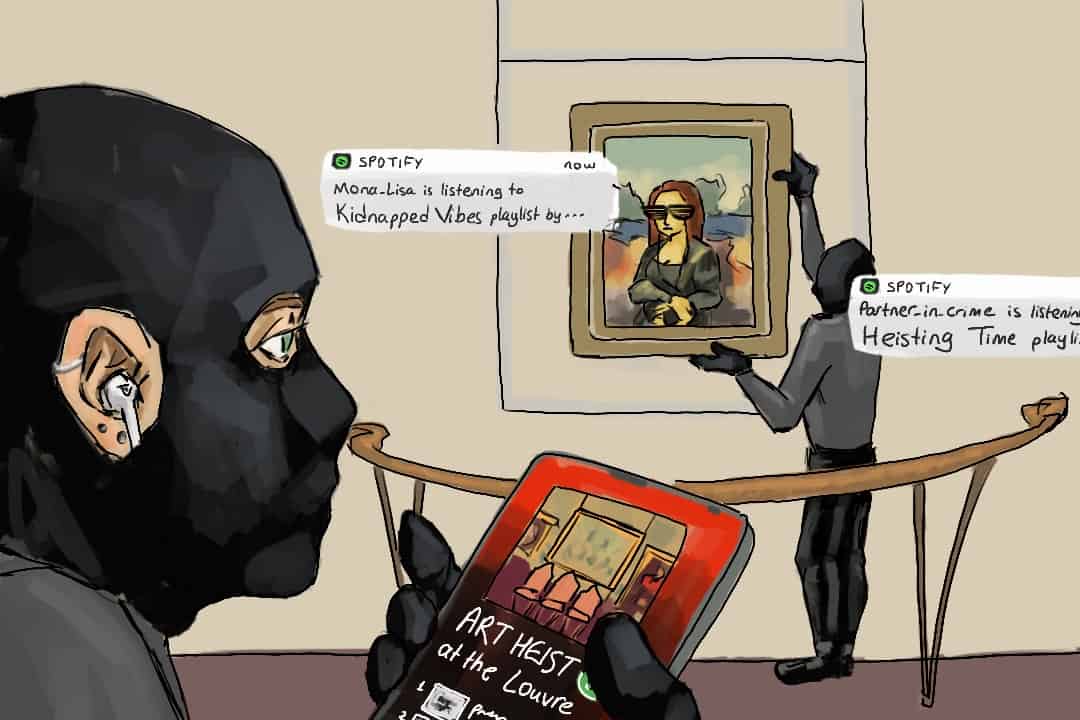When I was growing up, if we wanted to listen to music, we’d turn on the radio and listen to 99.9 Virgin Radio for the top 40 pop charts. From 102.1 the Edge for sweltering summer days, to Jazz FM 91.1 for cold winter drives to band practice, to 96.3 Classical FM for long autumn road trips, each radio station had its purpose.
As years went by, we were soon able to search up any music video we wanted on YouTube during our allotted computer time or buy our favourite songs on iTunes for $0.99 each.
And in more recent years, you could try out a curated Spotify playlist like Discover Weekly, which suggests songs inspired by your listening habits. The format in which we listened to music became clearer and more convenient as time passed, with the language developing parallel to technology.
Although Spotify took six years to launch in Canada after its initial release in Sweden, it very quickly captured the hearts and homescreens of music lovers across the nation. As someone who’s transitioned into an avid Spotify user myself, I’ve noticed that the game has completely changed when it comes to listening to music.
Now, there’s an art to curating the perfect Spotify playlist.
Initially, playlists were of a broad variety, usually classified by genre or artist. However, as the digital age deepens, we are now seeing playlists such as “walking out of a movie theatre and feeling like you’re on top of the world” and “driving on the highway at 7am on a wednesday.” We can now curate playlists filled with songs that scratch a certain itch we just can’t elaborate on. No matter how specific your emotion or scenario, playlists for every occasion can provide a constant soundtrack to our lives.
As a music aficionado, I’m no stranger to this phenomenon. Though they may not be as carefully curated as some of my other playlists such as “Art Heist at the Louvre,” it’s become a habit of mine to create monthly playlists filled with whatever it is that caught my ear that month.
The language of music speaks louder to me when I listen back on these playlists. Delving into “October 2018” immediately transports me back in time. Suddenly, I’m 17 again, and I’m jamming out to a miscellany of Shostakovich, Glass Animals, and After The Burial.
These niche playlists almost turn Spotify into another social media platform. By choosing the perfect cover art to accompany a gripping description, playlists on the app almost act as posts on your profile. Soundtracks offer accompaniment to the good times, the bad times, and everything in between. They’re a language that our generation is becoming increasingly fluent in.
While social media platforms like Instagram or Pinterest focus on visual media, Spotify highlights the beautiful language of audio.
These playlists don’t even need to be unified stylistically, nor do they need to be explained. The music we choose tells a story in and of itself, eliciting emotions within listeners that can only be described as the feeling you get when “Stopping at the 7/11 for Gas and Snacks at Midnight.”
Unlike past generations that curated playlists through downloading MP3 files of their favourite songs or recording songs from the radio onto cassette tapes, we have a massive musical universe at our fingertips. The most fundamentally universal experiences can be aptly described through playlists — as seen by “coronacation” and “AAAAAAAAAAAAAAAAA,” both extremely appropriate given the times we live in today.
We use the language of music to relate to the world around us, make sense of digital media, and create alternate realities for ourselves. Our generation has shaped the internet, creating a digital time capsule that will be immortalized for years to come. Not only can we express ourselves and create timelines for our lives through media we’ll remember and look back on fondly, but we can capture a glimpse into the lives and histories of others as well.
It’s an adventure, a grand trek that might only be accompanied by “hiking through the mountains with a patagonia pullover.” Soundtracks that once played in the periphery of our lives now describe our universe, collecting and organizing our experiences in the digital world.
When it comes to speaking the language, Generation Z is quick to catch on. By the playlist “Magic In The Mundane” alone, it’s safe to say we’re fluent.


